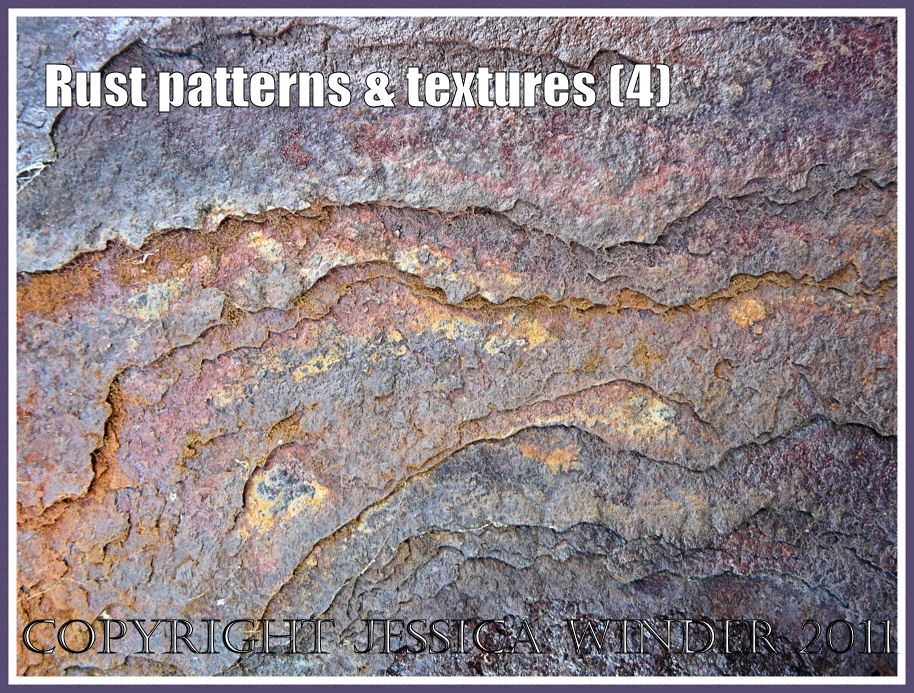Although man-made iron structures are not themselves natural in the same way as in plants, animals, rocks, fossils and minerals – they are subject to weathering and decomposition processes which are naturally occurring phenomena.
At the seaside, iron constructions like piers are particularly vulnerable to rusting or oxidation because of their exposure to waves and salty sea air. The results of weathering and erosion can be surprisingly colourful with interesting patterns and textures. Most people think of rust as being just orange in colour but, in fact, it can show all the colours of the rainbow. In mineralogy galleries of museums it is possible to see lumps of haematite ore, from which iron is derived, that exhibit an intensely hued iridescence.
COPYRIGHT JESSICA WINDER 2011
All Rights Reserved






